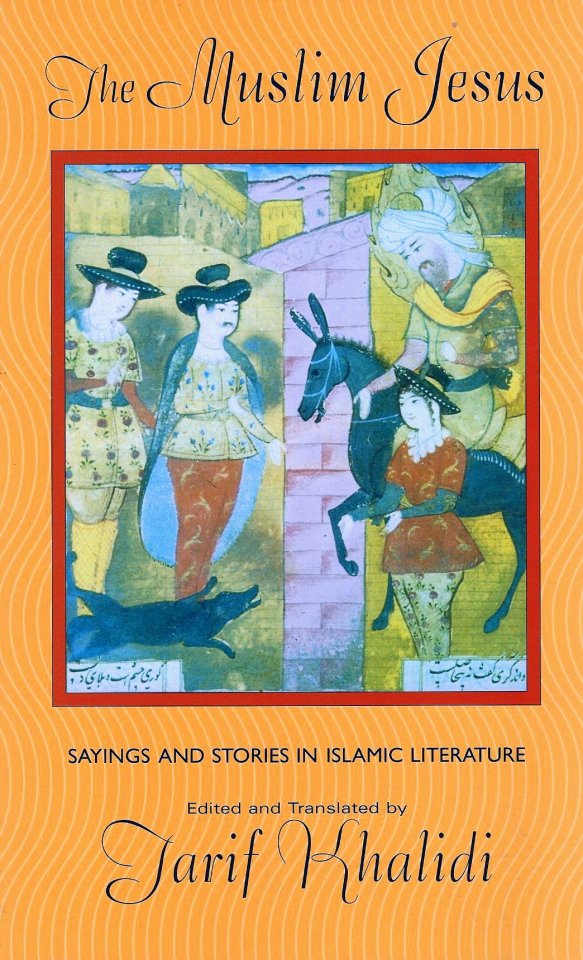#Sufi mysticism
Text
youtube
musician: Özgür Baba
instrument: Turkish Cura
composer: Yunus Emre, a Turkish Sufi mystic contemporary of Rumi
poem title / translation: Benim Adim Dertli Dolap / Endless Trouble Is My Name
poem translation:
Water-wheel, why do you moan?
For I am sorrowful, that is why I moan.
To the Lord I've given my soul,
For I've troubles, I moan.
Troubled water-wheel is my name,
My water flows pure,
As the Lord wishes thus,
For I am sorrowful, that is why I moan.
They found me as a mountain tree,
They broke my arms and cut my wings,
They thought me fit for a water-wheel,
For I've troubles, I moan.
From a mountain I was brought down,
Neither sweet, nor bitter, am I,
A devoted of God, am I,
For I am sorrowful, that is why I moan.
They felled my trunk and carved my branches,
Every piece of mine to be remade,
Yet, this commandment came from God,
For I've troubles, I moan.
Yunus, he who comes and finds no joy here,
His expectations never to be met,
As none can remain in this fleeting world,
For I've troubles, I moan.
Dervish Yunus,
Tears shed sin,
I'm in love with God, I swear,
I descend for Him.
#trickster-spirit#art & artists#Turkish poetry#Sufi mysticism#Yunus Emre#benim adim dertli dolap#Youtube#Özgür Baba
6 notes
·
View notes
Text
Misuse of the 6 typing in Modern Enneagram


Welcome to my series about Type 6. The center of Perceptions. The virtues of Courage and Loyalty. The loss of Holy Faith. The vices of Envy and Doubt. The Reactive, Attachment Head Type. In this multi-post series we will delve into what all of this means.
-----
Too often in modern enneagram, Type 6 is not treated like a distinctive point on the symbol with its own identity. It is treated like the dumping box for everyone we find annoying, argumentative and unpredictable, and can't be bothered properly analyzing.
Lots of 8s get put into the 6 category, especially since the nonsense idea of "counterphobic 6" [x] emerged. People have told me I'm a 6 many times before, and the irony is that they could be right... however, nobody who has typed me at 6 has had logical reasoning behind their stance. I have more reasons to explain why I'm a 6 than anyone who has said that I'm a 6 core.
The modern enneagram community doesn't respect or understand type 6 as a real archetype. These people who typed me as 6 because I argued with them were basically in a math exam, getting the right answer by fluke after doing all the wrong working. This has probably happened to countless other people reading this post... typing people as 6 because they dare to be opinionated is extremely common malpractice in every enneagram community.
In Type 6s, "Doubt" runs much deeper than disagreeing with what someone says. Showing basic critical thinking skills and asking questions is the fastest way to get yourself typed as 6 in modern enneagram groups, which is dumb dumb dumb. In truth, any enneatype can doubt what people say and even argue chronically. Argumentativeness is a trait too vague and too diverse in how it presents itself, to assign to any one type.
Please read my post about how Counterphobic 6 is not a real enneagram type category. If someone calls themselves a "counterphobic 6" or tells you you are a "counterphobic 6", you can be assured they don't know what they are talking about and move along.
#6w7#6w5#head triad#enneagram#enneagram 6#type 6#5w6#7w6#sufi enneagram#personality theory#typology#mysticism#sufi#sufi mysticism#gurdijeff#sarah's 6 series
25 notes
·
View notes
Text
"Attar is one of the greatest poets of the Persian language. Nonetheless, his popularity - both in Iran itself and in the West (Goethe, for example, touched on him only briefly in his West-Eastern Divan) - does not match that of Ferdowsi (d. 1020), Omar Khayyam (d. c.1132), Rumi, Saadi (d. 1292) or Hafiz (d. 1389); occasionally he is even omitted from the line of seven Persian poet-princes in favour of Jami (d. 1492). One possible reason for this is that the composition of his poetry is too artful, too complex to be effective in the town squares and teahouses, while at the same time, many of his stories and figures may seem too coarse, too folk-like and too sarcastic to be at the forefront of the high spiritual literature cultivated at courts in former times and in middle-class households today. Attar’s poetry, on the other hand, is far less stilted than that of most Persian poets but, rather, unadorned, clear and immediate. The pain it expresses is not spiritually filtered as in Rumi, far less metaphysically elevated than in Saadi, and not sublimated into pleasure as in Omar Khayyam - where Hafiz turns the earthly into the mystical, Attar strips mysticism down to its leaden, earthly foundation in order to scream his longing to the heavens."
--Navid Kermani, The Terror of God: Attar, Job and the Metaphysical Revolt
.
I asked my professor which masnavi (Persian epic poem) he thinks is the greatest ever written. He replied, Rumi's Masnavi (the only masnavi Rumi wrote). Shock. How can there be a masnavi greater than Attar's Conference of the Birds? (There are 4 authentic Attar masnavis; sadly, as far as I know, Conference of the Birds is the only one that has been translated into English.) Reading through Rumi's masnavi I think I am still team Attar. It's Attar's coarseness I love--he is a poet of mad saints and freaks. In Rumi's Masnavi, the absence of a frame story and the pious/didactic tone is somewhat of a barrier for me. The pieces don't quite hang together, whereas Attar's Conference of the Birds is intricately structured--there are stories within stories within stories, each bird with its idiosyncratic psychology--a narrative arc that mirrors the journey of the soul across the seven valleys. But maybe there is a difference between reading a sufi text for its poetry rather than religious instruction, I don't know.
#attar#Rumi#persian poetry#poetry#literature#masnavi#Navid Kermani#islam#islamic mysticism#islamic literature#mysticism#sufism#sufi literature
186 notes
·
View notes
Text

“Take my shirt and lay it over my father's face: he will recover his sight. Then bring your whole family back to me.”
Surah Yusuf verse 93.
In different eras and places among Muslims talismanic shirts were worn under the regular robes of people to offer protection from Nazar and Sihr. It is believed that this tradition dates back to the prophet Yusuf (Joseph). One of the more famous practitioners of this tradition are the Ottomans, sultans such as Cem Sultan and Süleyman-ı Evvel wore them. This Quran verse is what inspired this.
#books#history#literature#religion#theology#mysticism#esotericism#religious#orthodox#sufi#Sufism#ottomans#ottoman history#islam#islamic history#islamic theology#islamic tradition#traditionalism#traditional#sunni muslim#shia muslim#Muslims#shia#Sunni#haqq#hanafi#ahlulbayt#Middle East#orient#oriental art
68 notes
·
View notes
Text
The Sufi Vision
“To discover the light and power latent within all human beings, that is the secret of all religion, the power of mysticism, and the essence of philosophy, without interfering with customs or belief.
The Message is to make humanity conscious of the words in the Bible, where it is said ‘We live and move and have our being in God’, to realize this and recognize the kinship of humanity in the realization of God.
This is not the time to advance any particular sect, church, or belief. We have too many sects. They are only outer forms. The things that really matter are deeper.”
— Hazrat Inayat Khan
* * *

Mohannad Husam, Love (2023)
#The Sufi Vision#Sufism#Art#Beauty#Illustration#Love#Hazrat Inayat Khan#Wisdom#Bible#Mysticism#Religion#Philosophy#Sacred Scriptures
24 notes
·
View notes
Text

Sufi the mystic fox who begged a powerful witch to be turned human
[old oc]

she doesn't really know how to move her lips or her tongue to speak so anytime someone talks to her she just kinda goes "hahahahaha" (like the fox sounds but more human) with a smile which is the only facial expression she is capable of making her face is either tensed, relaxed or smiley
25 notes
·
View notes
Text

“Treat this world as I do, like a wayfarer; like a horseman who stops in the shade of a tree for a time, and then moves on.”
~ Sayings of the Prophet (from Caravan of Dreams by Idries Shah)
#Sayings of the Prophet#Caravan of Dreams by Idries Shah#Sufi Gnosis#Sufi Philosophy#Prophet Muhammad#Islam#The Path of the Mystic#Awakening#Enlightenment
16 notes
·
View notes
Text
Veg Saying of Jesus from Islam: Christ said, “Flesh eating flesh? How offensive an act!” - The Muslim Jesus: Sayings and Stories in Islamic Literature, by Tarif Khalidi:
https://archive.org/details/muslimjesussayin0000khal
The saying above reminds me of The Gospel of Thomas, Saying 112: Soul should be independent of flesh: Jesus said, “Woe to the flesh that depends upon a soul. Woe to the soul that depends upon flesh.” (The Gnostic Scriptures, Bentley Layton, David Brakke)
Because some Ebionite Christians held out longer in Arabia, that's probably why some in Islam had an awareness about Christian veg teachings.

#veg#vegan#veganism#islam#sufi#christianity#gospel of thomas#ebionites#vegetarian#christian mysticism
10 notes
·
View notes
Text
Kaaga karang dhadoliya saglaa khaaiyo mass Aey do nainaan mat chhuchho pir dekhan ki aas
(O crow! come and peck all this flesh over this skeletal frame of mine, Leave these two eyes untouched for they are in wait of that Grand beloved of mine)
-Baba Sheikh Farid (1173-1266 )
#baba sheikh farid#sufism#punjabi poetry#desiblr#sufi poetry#punjabi#desi#mehreen khan#desi academia#desi aesthetic#desi tumblr#desi culture#poetry blog#sufi quotes#mysticism#poetry in translation#classical literature
80 notes
·
View notes
Text
HTN Ch. 36:
But that night you just lay
next to the Body, and you noticed that her eyes were open very wide, and
that in the darkness they were death-mask gold.
You said, “Beloved?”
harrow calling the body "beloved" after noticing her golden eyes hahahahahahahahahahahahaha.
#also could write a lot about how so much of harrow's desire either of the body or gideon very much mirrors the writings of certain mystica#*mystics#thinking specifically of sufi texts which frequently use 'beloved' but i'm sure that language could be found in early christian texts too#quote#htn spoilers#harrow the ninth spoilers#tlt spoilers#the locked tomb spoilers#htn#harrow the ninth#tlt#the locked tomb
93 notes
·
View notes
Text

107 notes
·
View notes
Text
Enneagram & Movement
If you look into the OG enneagram documents, they didn't even use it as a personality theory. Gurdijeff was never typed with an "ego fixation" until after his death.
The creators of enneagram used it to map processes in nature. Read the Wikipedia page about the original enneagram, pre-Naranjo and pre-Ichazo. The OG theorists never took the movement out of the enneagram like Naranjo did when he wrote his chapters about all the different types as if they are static caricatures rather than moving beings. the original theorists were OBSESSED with movement between the numbers. They were trying to map biology to the hexad types.
In modern enneagram, we are obsessed with pinning ourselves to a static point, which I think is moronic because an enneagram that doesn't move is a dead symbol. Never forget this quote.
In order to understand the enneagram it must be thought of as in motion, as moving. A motionless enneagram is a dead symbol, the living symbol is in motion.
- George Gurdijeff
Tritypes based on the head / heart / gut triad were not a thing until Oscar Ichazo made them so. Pre-Ichazo, enneagrammers were concerned with all sorts of "tritypes" beyond the 27 common ones we know. 147, 285, 369, 428, 571, etc. They were even concerned with quadtypes, quintypes and sextypes. There was far more flexibility in their thinking about how to use the enneagram map, as they did not confine themselves to these arbitrary rules that we use in modern enneagram, and they were not obsessed with their own ego fixations.
The Sufis used enneagram as a personality theory, but not in the same way we do in 2022. Again, they were not obsessed with their own egos. They did not go labelling themselves as this number and that number. They explained the points on the enneagram as vices / virtues that all humans have inside of them and all humans can relate to.
-----------
As for me, I type myself the way I do because that is the movement I observe inside of myself. I never saw my fixation as an ego fixation that I needed to "fix" or rid myself of. I saw it as an impartial pattern operating inside of me, for better or for worse. A pattern I enjoy observing, through observing my feelings and reactions and psychological state over time.
I am someone who started from observing the enneagram inside of myself as a moving symbol. Now I am expanding towards seeing it more broadly applicable to things beyond myself and the personalities of people I know. Going back to the basics where we applied it to biological patterns and nature patterns and patterns which weren't our egos. But perhaps starting from inside ourselves and our feelings and our reactions is the best way to develop a framework which lets us understand things more broadly.
#i am in the enneagram rabbit hole#because i can feel this system in my body#it is realer than any rabbit hole ive been down. most rabbit holes are just fakedeep.#arbitrary symbolism thrown together by some dude tryna be deep#tryna be god#like all the freemason symbolism#but with enneagram#i can feel the movement of the patterns#thats why the inventer (gurdijeff) is always typed as an 8-9 liner... lol... zero shock#george gurdijeff#enneagram#typology#sufi mysticism
3 notes
·
View notes
Text

--Mansur al-Hallaj (d. 922 CE)
#literature#poetry#Mansur al-Hallaj#Mansour Al-Hallaj#sufism#sufi poetry#arabic poetry#mysticism#islam#islamic mysticism#brokenness
111 notes
·
View notes
Text
I don’t often post videos here because for some reason, videos don’t seem popular with Tumblr audiences (you all seem to be more fond of gifs) but occasionally I love sharing beautiful videos of my home, coupled with music and favourite quotes. Rumi inspires much of my poetry.
Video source: Pinterest. Music by Cengiz Kurtoğlu.
#sufism#rumi#mevlana#poets#sufi poetry#mystic#istanbul#türkiye#love#love poem#love poetry#love quotes#beautiful words
67 notes
·
View notes
Photo

#Rumi#Jalaluddin Rumi#Jalaluddin#sufi#sufism#sufi mystic#mysticism#mystic#polarity#polarities#wholeness#spirituality#spiritual#awareness#awakening#spiritual awakening#psychology#wisdom
298 notes
·
View notes
Quote
The benefit of the knowledge of the self is to know for certain that you are neither existent nor nonexistent, that you are not, never have been and never will be.
Ibn ‘Arabi / Balyani, Know Yourself: An Explanation of the Oneness of Being, translated by Cecilia Twinch
#quote#Ibn Arabi#Balyani#Sufism#mysticism#know thyself#self-knowledge#spirituality#existence#existential#existentialism#Cecilia Twinch#Sufi#ontology#philosophy
334 notes
·
View notes